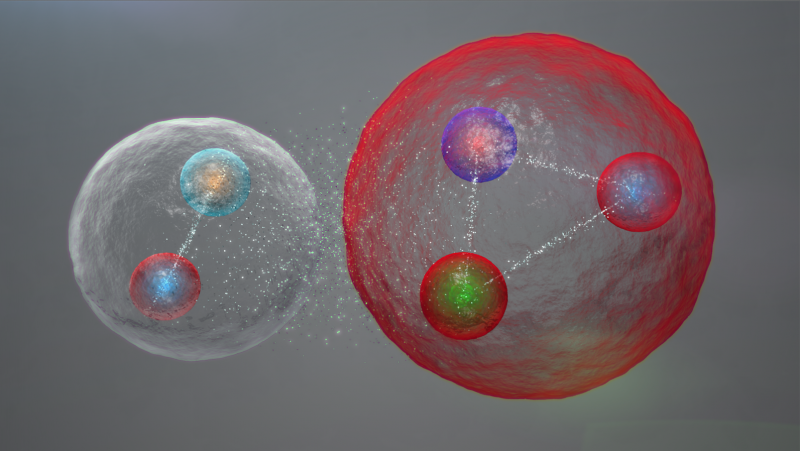A thread on Yang-Mills theory, confinement, phases of matter, symmetry, and how one remarkable theory continues to inspire a field of research even after decades of thought.
(A biased, quasi-historical introduction to some big topics in my work.) 1/n
(A biased, quasi-historical introduction to some big topics in my work.) 1/n
Yang-Mills theory, the quantum field theory of the strong nuclear force, was first described in 1954. Superficially it describes massless interacting vector particles, gluons. Notably, no particles of this type were observed in nature at the time. 2/n
Thus, Yang-Mills theory was originally thought to be unphysical and famously derided by Pauli, a titan of physics, in a seminar by Yang @the_IAS. According to myth, Pauli was so fierce that Yang gave up and sat down during his talk and only finished at Oppenheimer’s request. 3/n
Uncovering the deep relevance of Yang-Mills theory to nature was a long saga of discovery with many actors both in theory and experiment. In terms of conceptual developments, the most profound leaps were to the ideas of confinement and the mass gap. 4/n
Confinement is the idea that massless gluons interact so strongly that they form composite objects called glueballs (pictured above). Remarkably, although the individual constituents are massless, these composites have a non-zero mass. This is the famous mass gap. 5/n
When gluons interact with charged matter, i.e. Gell-Mann’s famous quarks, the same phenomenon occurs and the quarks and gluons are confined in composites. This leads to mesons and baryons, which include the components of atomic nuclei. 6/n
Schematically, one can visualize the quarks in these composites as being held together by a string made of gluons. Attempting to make this cartoon rigorous laid the foundations of string theory and modern developments in holographic duality. 7/n
Much of this is considered established science. Indeed, these ideas have been dramatically confirmed at accelerators. Theoretically, some of our best evidence for this picture comes from supercomputer simulations where spacetime is approximated by a discrete lattice. 8/n
Nevertheless, a precise analytical understanding of confinement and the mass gap in the real-world continuum with smooth spacetime remains elusive to this day. Any qualitative progress in this area would revolutionize a whole field of research. 9/n
In fact, the mathematics behind confinement and the mass gap is the subject of a million-dollar Millennium Problem. Bits and pieces of related work have led to Fields medals. This rich interplay between physics and mathematics is described in @grahamfarmelo’s recent book. 10/n
One area where there has been recent progress is in characterizing what kind of phase of matter is made by glueballs. Often, phases of matter are described in the Landau paradigm where one tries to identify a symmetry that is either preserved or spontaneously broken. 11/n
A famous example is an Ising model of interacting spins. There is a symmetry that flips spins from up to down. In a symmetric phase, spins have equal chance to be up or down. In a symmetry breaking phase, the spins align leading to magnetization. 12/n https://www.quantamagazine.org/the-cartoon-picture-of-magnets-that-has-transformed-science-20200624/">https://www.quantamagazine.org/the-carto...
Yang-Mills theory naively resists this classic framework as there is no obvious relevant symmetry. At its core, the idea of symmetry requires objects, like the Ising spins, that are acted on in some way. The glueballs of Yang-Mills theory are not in such representations. 13/n
Instead, a new insight is a generalized notion of symmetry where the charged objects are the gluon strings binding quarks together. In Yang-Mills theory theses strings are closed loops that can never break and cannot be screened by quantum fluctuations of the vacuum. 14/n
With this new concept, one can identify the confining phase of Yang-Mills theory as one where this string symmetry is unbroken. By contrast a phase of matter where the gluons are liberated and unbound would be one where the symmetry is spontaneously broken. 15/n
Thus, the symmetry-based understanding of phases of matter can describe the essence of a confining phase. The fascinating importance of extended objects, i.e. strings as opposed to particles, is a recurring theme in many developments in modern theoretical physics. 16/n
Looking forward, new understandings of symmetry have opened broad fronts in the interaction between branches of physics, such as condensed matter, and high energy theory, and a renewed interplay with topology, algebra, and category theory. There is much to learn! n/n

 Read on Twitter
Read on Twitter



